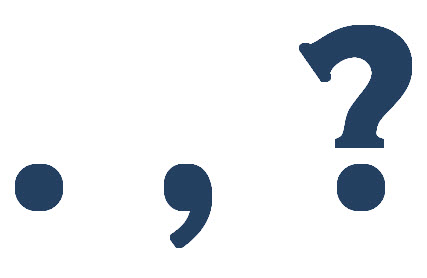Have you ever found yourself staring at a sentence, unsure whether to punctuate it with a period or a comma? You’re not alone. These tiny marks, often taken for granted, hold the power to drastically alter the meaning of our words. They are the unsung heroes of the written word, guiding the reader through the cadence of thought, punctuation marks like a comma or a period can make the difference between smooth sailing and a jarring stop.

Image: www.pinterest.com
The period and comma, seemingly simple, are actually the foundation of clear and effective communication. They are the building blocks that create structure and flow within sentences, helping us to understand the nuances of language and express ourselves with greater clarity. As we delve deeper into their world, you’ll realize how the period and comma, these tiny marks, shape how we read and interpret the very meaning of our words.
The Period: A Full Stop, a Pause for Thought
The period, the most basic of punctuation marks, signifies the end of a complete thought. It’s the signal that a sentence is finished, allowing us to catch our breath before embarking on the next. Think of it as a full stop, a moment of silence in the symphony of words.
The period is more than just a symbol. It’s a powerful tool for clarity. Imagine a sentence without periods. It would be a jumbled mess of words, difficult to decipher and follow. The period serves as a divider, separating ideas and creating a logical flow to our writing. It helps us to organize our thoughts into meaningful units, making communication more effective.
The Comma: The Subtle Guide, the Pause that Refreshes
The comma, unlike the period, is a more subtle punctuation mark. Unlike the period’s full stop, the comma acts like a momentary pause, a breath in the midst of a sentence. It doesn’t end the journey but allows a moment of reflection, a pause for the reader to catch up.
The comma can function in many ways. It separates list items, clarifies the relationship between words and phrases, and even introduces additional details. It’s a flexible tool that adds precision and nuance to our writing. Commas help us to highlight connections between words and ideas, providing a richer, more intricate understanding of what we read.
Using Commas and Periods Effectively: Practical Tips
Mastering the period and comma requires understanding not just the rules but also the intention behind their use. Here are some key guidelines:
The Period:
- Use a period at the end of every sentence.
- Use a period after abbreviations (e.g., “Mr.”, “Dr.”).
- Use a period after an initial in a name (e.g., “J.K. Rowling”).
The Comma:
- Separating Items in a List: Use commas to separate items in a list of three or more items (e.g., “I bought apples, oranges, and bananas.”).
- Introducing a Phrase or Clause: Use commas to separate introductory phrases or clauses from the main part of the sentence (e.g., “After a long day, I decided to relax.”).
- Separating Independent Clauses: Use a comma before a coordinating conjunction (and, but, or, nor, for, yet, so) that joins two independent clauses (e.g., “I went to the store, and I bought some groceries.”).

Image: reachingvietnam.com
Period Or Comma
https://youtube.com/watch?v=80SreUMqudg
The Power of Punctuation: A Masterclass in Clear Communication
While seemingly simple, mastering the period and comma can unlock a world of clarity in our writing. These tiny marks act as guideposts, assisting the reader in understanding the rhythm of our thoughts. They guide us through the flow of our writing, ensuring that our words are not only understood but appreciated for their precision and clarity. They are, in essence, the silent architects of effective communication.
As you continue your journey with the period and comma, remember that practice is key. The more you fine-tune your understanding of these marks, the more articulate and engaging your writing will become. Embrace the value of punctuation, and you’ll be well on your way to crafting clear, impactful, and enjoyable content.





